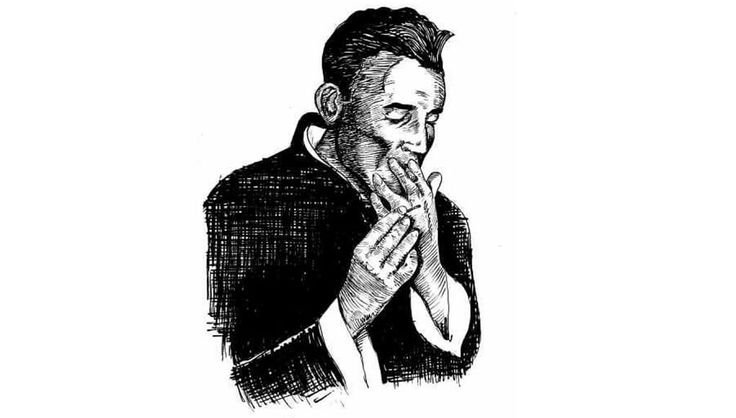The Theme of Alienation and Disillusionment in Contemporary Hindi Poetry

Alienation and disillusionment are now becoming defining themes of contemporary Hindi poetry, especially in the fray of those complexities with rapid social and technological changes. Modern poets describe this deep sense of isolation in urban life, the disillusionment with socio-political structures, and the existential dilemma of a fragmented world. These themes, however, are not new to Hindi poetry but have evolved with changing historical and societal conditions. While poets of the Progressive Writers’ Movement (प्रगतिशील लेखक संघ) like Muktibodh and Raghuvir Sahay spoke of disappointment with capitalism and failed revolutions, later poets of the Nayi Kavita (नई कविता) movement, including Shamsher Bahadur Singh and Agyeya, have written about existential alienation in a more personal sense. Today, these themes have taken new forms in response to globalization, digital life, and political instability.
The most significant modernist alienation through contemporary poetry is in the presentation of modern urban life. Cities, once icons of progress, are portrayed, through poetry, as spaces of loneliness and emotional disconnection. The crowds that constantly rush about, the noise that never seems to end, and the frenetic pace of city life only multiply the sense of feeling alone. Several poets portray the experience of living among millions yet feeling profoundly alone. In Gopal Das Neeraj’s poetry, for example, the city often becomes a metaphor for emotional emptiness:
“इस नगर का हर मकान गिर गया है,
भीड़ के इस शोर में इंसान गिर गया है।”
This brings in the idea that how, despite the energy infused in them, urban environments can turn into graveyards of relationships and emotions.
In addition to this personal alienation, modern Hindi poets express some profound disillusionment with political and social structures. Many feel betrayed with the broken promise of democracy, justice, and economic growth. Corruption, oppression, and systematic failures are vociferously condemned in poems and verses. Often, such poetical expression against the increasing mismatch between ideal promises and harsh reality is from authors like Pash (Avtar Singh Sandhu) or Vinamra Srivastava. Sometimes, such authors question the right of such institutes to claim on the name of people. It may read for a contemporary one:
“KHABREYON MAIN HARI ROZ MARTEY HAIN LAG.
क़ानून किताबों में जिन्दा है अब भी।
Such lines reflect the disconnect between the words of the books and the people’s reality:.
On the personal level, the modernity of contemporary poetry has much to say about emotional disillusionment and existential crises. Writers talk about broken relationships, a yearning for the lost past, and a search for meaning in an increasingly fractured world. This introspective style wherein writers shift focus from social discontent to deep personal crises is expressive of the influence of poets such as Gulzar, Kedarnath Singh, and Uday Prakash. For instance, a poet could very well express inner emptiness with lines like:
“आईने में कोई चेहरा नहीं,
बस धुंध है जो कभी मैं था।”
Such poetry captures the sense of losing oneself in the monotony and alienation of modern life.
However, alienation is not only reflected but also resisted and healed through poetry. Many poets document disillusionment, but they also attempt to bridge the gap between isolation and community. Poets today are using social media and online platforms to connect with readers, thus turning poetry into a shared experience rather than a solitary expression.
Ultimately, the themes of alienation and disillusionment in contemporary Hindi poetry serve as both a critique and a mirror of modern society. Through their verses, poets invite readers to reflect on their own feelings of detachment and seek solace in shared emotions. Even in a world that often feels fragmented, poetry remains a powerful tool to voice dissent, rediscover belonging, and find meaning in the chaos. I have written a poem that reveals a subtle combination of both the elements of alientation and disillusionment.
“ तापमान! “
खुद के कितना पास आउ?
छिला छिला सा खुदको धकेल रहा हूँ बस।
गर्दन पर मेरी एक अलग तापमान बैठा है!
सर का तापमान, गर्दन के तापमान से बहुत अलग है! पैर ठंडे है इसलिए रोना आया है आज शायद!
मेरी आँखें कितनी नकली हैं?
मैं समझता हूँ के ये “ आज “भी शायद मेरा उतना ही नकली है। “कल” शायद असली होगा….और कल अगर असली होगा तो तापमान कहाँ कितना होगा? मैं नहीं जान सकूंगा….शायद!!!
मेरा ये सब महसूस करना एक सही हिसाब है।
सोचता हूँ अब सर गीला करके सो जाउं।
जो भी कह रहा हूँ शायद सच न हो…. नकली हो!
एक उबासी आकर चली गई…. काश कोई ये पन्ना चुरा ले!
The poem beautifully captures the themes of alienation and disillusionment through fragmented thoughts and sensory contrasts.
1. Alienation:
- “How close should I come to myself?”—There is a deep sense of detachment, as if even self-awareness feels distant.
- “A different temperature sits on my neck!”—The contrast between different body temperatures creates a sense of dissociation, as if the body and mind exist separately.
- “How fake are my eyes?”—This questions personal identity and perception, reinforcing the feeling of not fully belonging to oneself.
- The entire poem carries a tone of isolation, where even physical sensations feel foreign.
2. Disillusionment:
- “I understand that this ‘today’ is probably as fake as I am.”—There is a realization that reality might not be as meaningful or authentic as once believed.
- “‘Tomorrow’ might be real…”—A hesitant hope is present, but it is overshadowed by uncertainty, making it clear that there is no true belief in a better future.
- “Maybe what I am saying isn’t even true… maybe it’s fake!”—A complete breakdown of trust in thoughts and words reflects a deep existential crisis.
This poem is a powerful representation of inner conflict, existential questioning, and emotional detachment, making it a strong expression of alienation and disillusionment.
If we look at it now, the theme of alienation and disillusionment plays a unique role in Hindi poetry. Intensities are now being expressed in a new and different way!
Everything that happens around us takes on a new structure. Poetry is finding a different direction, bringing emotions and feelings to the surface. Hindi poetry gives words a new expression and depth, which is highly prevalent today!
There is one line that I have taken from one of my poems that exposes a brief understanding of hindi poetry and it’s multiple directions.
राहतों के भीतर चोर है
जिसे कभी मुकरते देखा तो कभी सूखते!!!
This line clearly reflects the theme of alienation.
“There is a thief hidden within relief”—This suggests that where there should be peace, there is instead a hidden unease or deception. It represents inner conflict and emotional alienation.
“Sometimes seen denying, sometimes seen withering!!!”—This illustrates the process of alienation, where there is a struggle between acceptance and detachment. “Withering” symbolizes emotional numbness or fading vitality, which is a key aspect of alienation.


